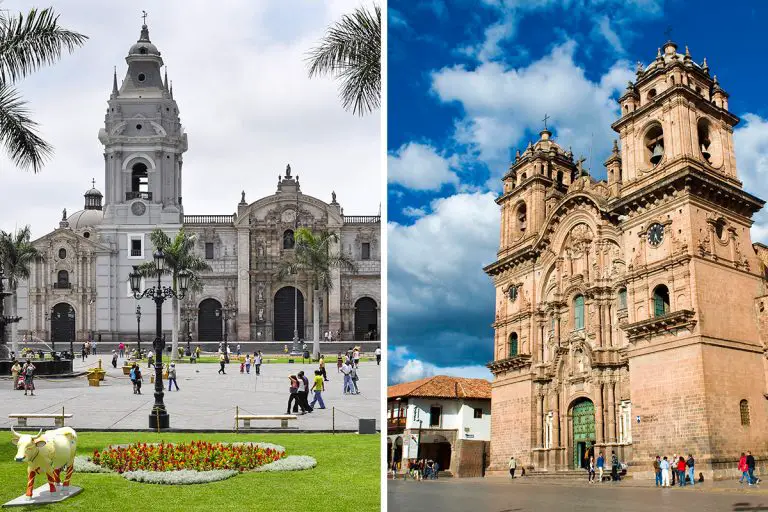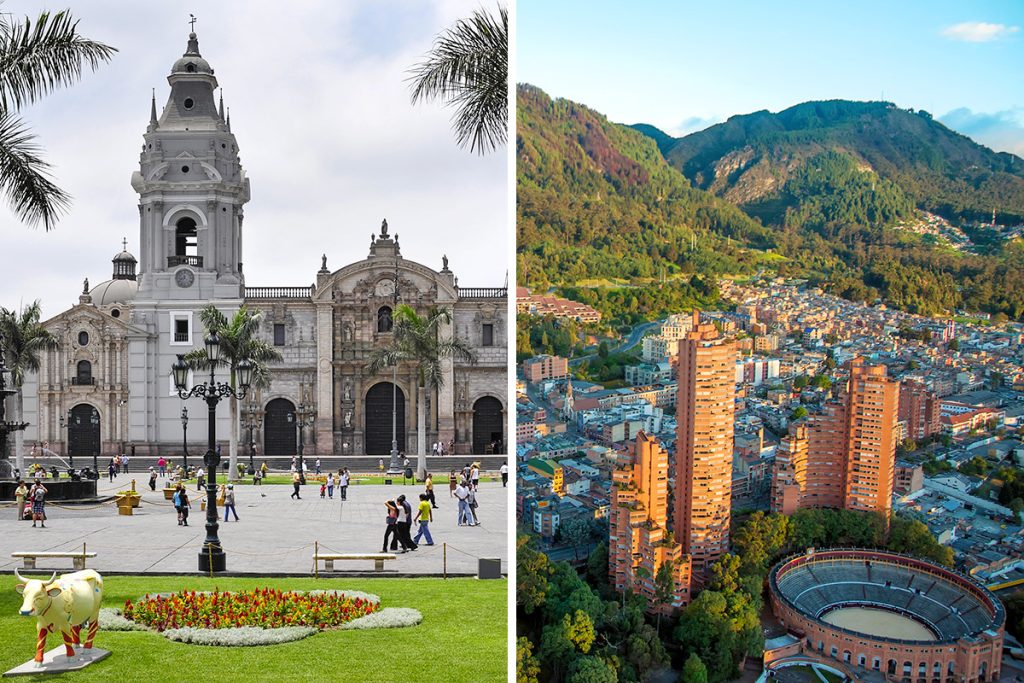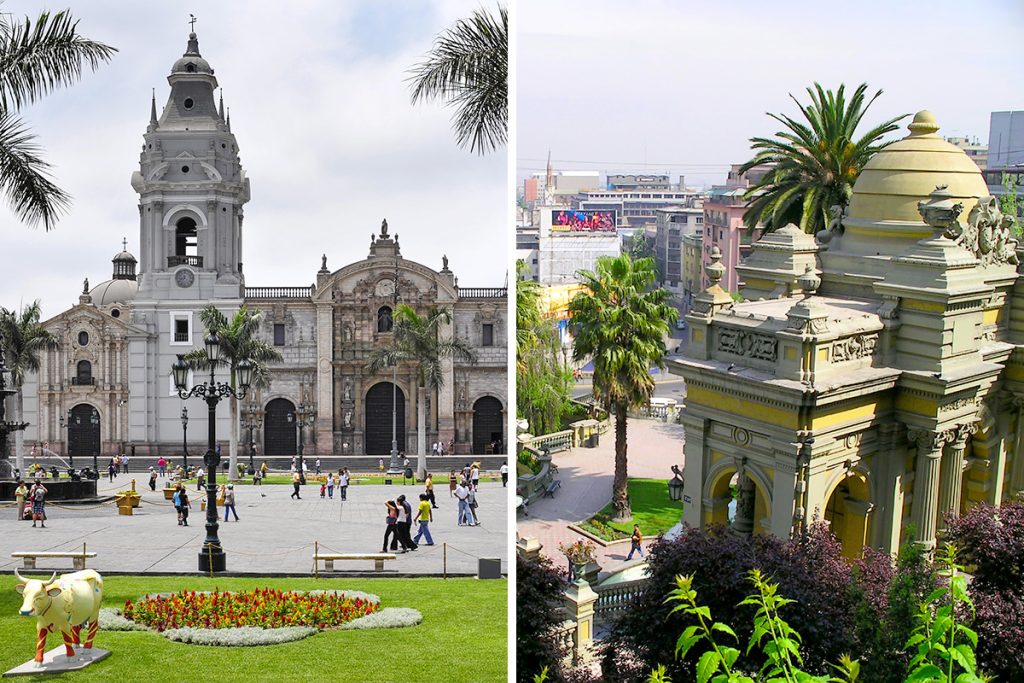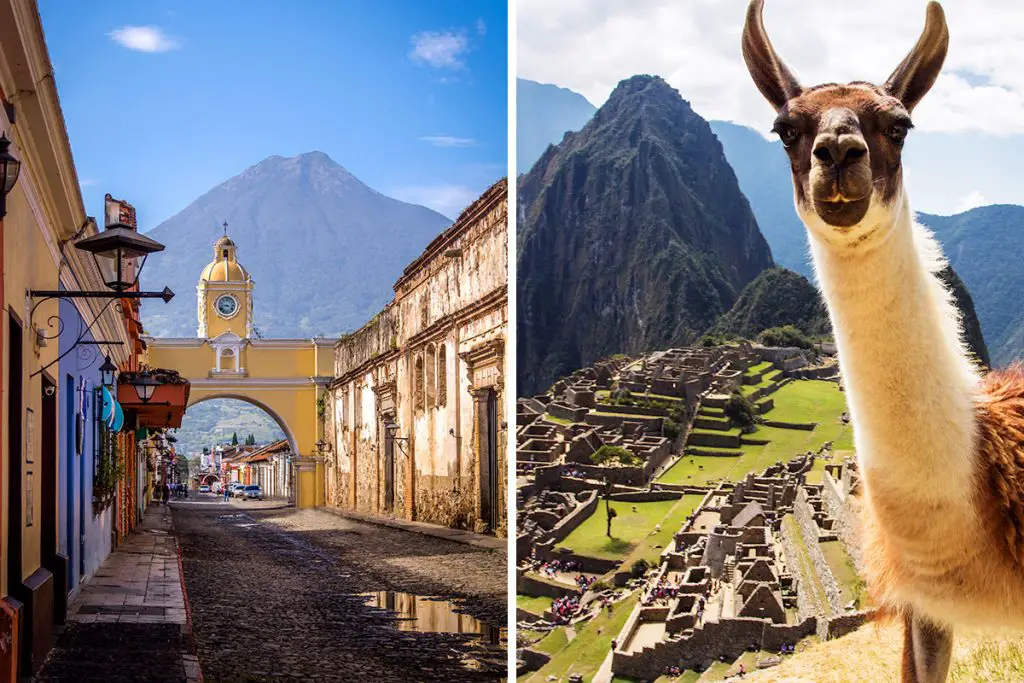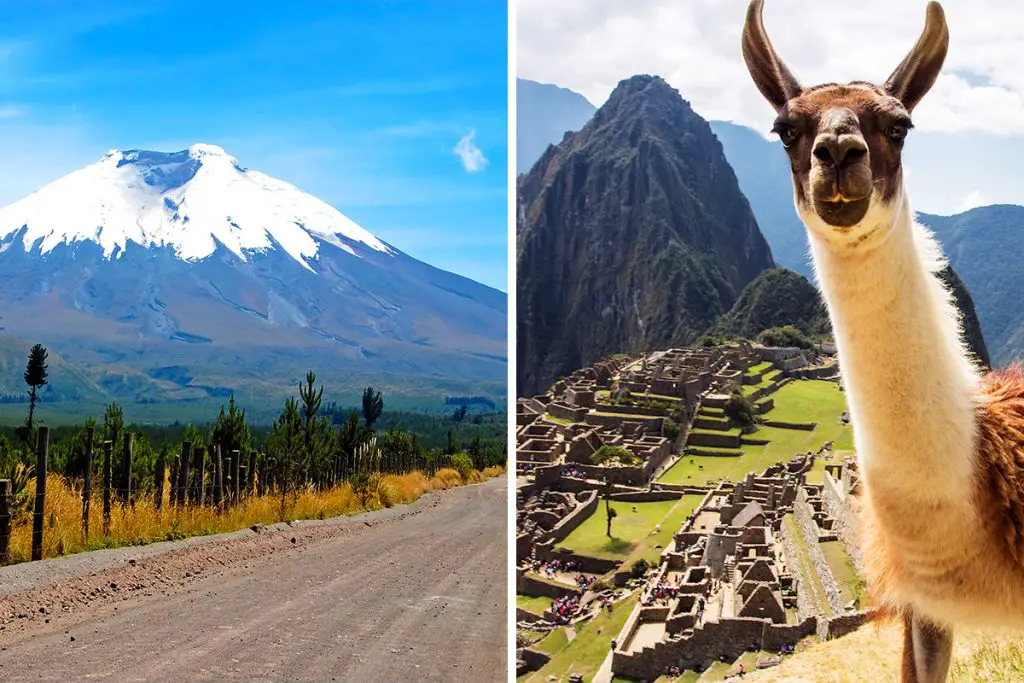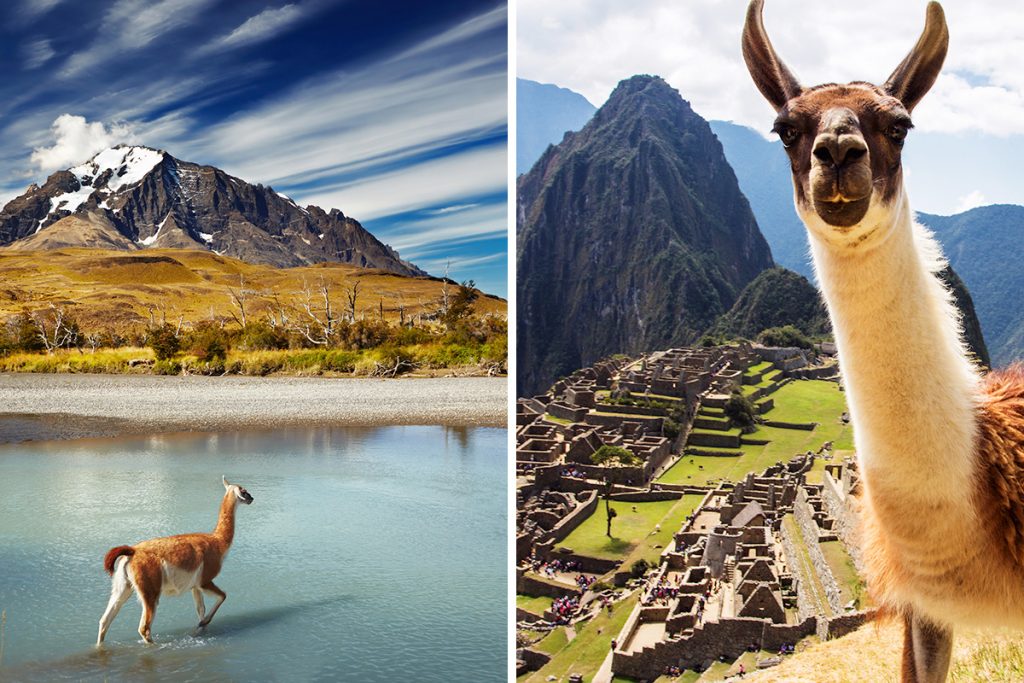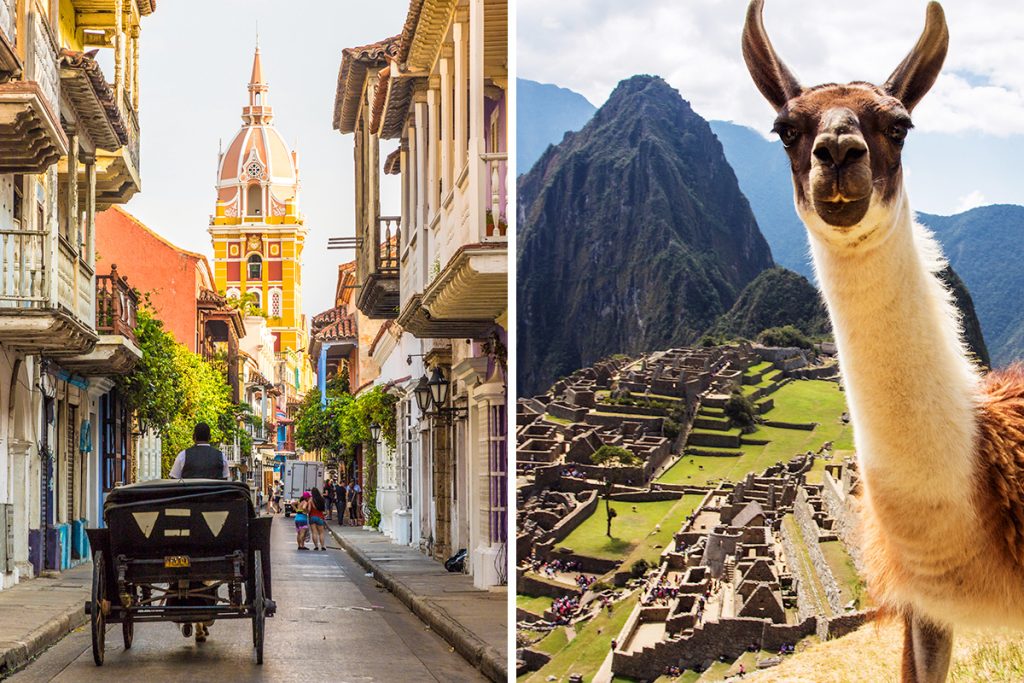Embarking on a journey to either Lima or Cusco unveils a cornucopia of experiences awaiting your discovery. Your feet may tread on Lima’s urban pulse, feeling the rhythm of modern-day Peru, or they might wander along the cobbled pathways of Cusco, tracing the echoes of the ancient Inca Empire. Ready to unravel the stories etched in the stones of these captivating cities?
History & Culture
Engaging with the history and culture of Lima and Cusco provides a peek into Peru’s layered past. These cities are like two sides of a historical coin, each showcasing a unique facet of the nation’s evolution.
Lima, being the capital, is a melting pot of traditions. Its history is a blend of pre-Columbian cultures with a significant influence from Spanish colonial times. The city’s modern persona is intertwined with its historical roots, creating a lively tableau of cultural expressions. The architecture, museums, and public squares are testimonials to Lima’s rich historical journey.
Cusco, on the other hand, is often seen as a living museum. This city was the heart of the Inca Empire, and its ancient essence is palpable as you stroll through its streets. The well-preserved colonial architecture stands as a testament to a bygone era, offering a tangible connection to the past. Here, history is not just observed but felt, lending a timeless aura to the city’s ambiance.
Your exploration in Lima might lead to delightful discoveries of modern art infused with traditional motifs, revealing the dynamic evolution of culture over time. The fusion of old and new is more apparent, providing a colorful canvas for your explorations.
In contrast, Cusco’s narrative is steeped in ancient traditions. The city seems to hold onto its historical essence, offering a deeper dive into Peru’s pre-colonial past. The juxtaposition of ancient Inca ruins with Spanish colonial architecture creates a fascinating blend of cultures that have stood the test of time.
In summary, your venture into the history and culture of Lima and Cusco is akin to stepping into different chapters of Peru’s narrative. While Lima showcases a blend of modernity with tradition, Cusco holds onto the echoes of ancient civilizations. Each city offers a unique lens through which to appreciate the rich tapestry of Peru’s past, teasing your curiosity to delve deeper into the stories that shaped this vibrant nation.
Attractions & Activities
Stepping into Lima and Cusco is akin to diving into a treasure trove of attractions and activities that beckon the curious traveler. Each city, with its unique character, unveils a myriad of experiences that etch lasting memories. Let’s delve into what each city has in store for the inquisitive explorer.
Lima, a blend of modernity and antiquity, offers a wide spectrum of attractions. The heart of the city, Plaza Mayor, is adorned with iconic structures like the Cathedral of Lima and the Government Palace.
As you wander through the city, the intriguing history encapsulated in the Basilica and Convent of San Francisco may catch your eye. The Museo Larco holds the keys to Peru’s ancient civilizations, unfolding a tale through its pre-Columbian art.
Cusco, the gateway to the majestic Machu Picchu, is a city where every nook and cranny tells a tale. The Sacred Valley cradles ruins that whisper the grandeur of the Inca Empire, while the fortress of Sacsayhuaman stands as a colossal reminder of Inca ingenuity.
The heart of Cusco, Plaza de Armas, is a hub of colonial architecture with the Cathedral of Santo Domingo beckoning history buffs.
The thrill-seekers among you might find solace in the trails leading to Machu Picchu from Cusco, offering an adventure through cloud forests and ancient ruins. Lima, on the flip side, invites you to explore the archeological site of Pachacamac, a pre-Inca sanctuary offering a glimpse into ancient Andean culture.
While Cusco may pull at the heartstrings of history enthusiasts and adventure seekers, Lima’s appeal lies in its blend of historical richness with urban charm. The city’s architectural wonders, coupled with its sprawling parks like the Magic Water Circuit, provide a varied palette of experiences.
In a nutshell, whether it’s the urban allure of Lima or the ancient whispers of Cusco that catch your fancy, both cities are brimming with attractions and activities that promise a rich, engaging experience. The choice hinges on whether you’re drawn to the modern beats of a city or the timeless rhythm of ancient tales.
Beaches
The gentle caress of the Pacific waves against the shores of Lima and Cusco offers a serene escape to those looking to intertwine nature with their exploration. However, the experience at each city’s waterfront presents a distinct flavor of Peru’s beautiful coastline.
Lima, blessed with a longer coastline, unveils an inviting expanse of sandy retreats. The Miraflores district offers cliffs that provide a panoramic view of the vast Pacific. Although not ideal for swimming due to the rocky terrain, the shores are a haven for surfers, with waves reaching heights of 3 feet (approximately 1 meter).
In contrast, Cusco’s proximity to a coastline is not its forte, as it’s nestled in the Andean Mountains.
However, a short journey to the nearby Lake Titicaca offers a tranquil respite. The world’s highest navigable lake at 12,507 feet (3,812 meters) above sea level, Lake Titicaca is a spectacle of nature that provides a different kind of beach experience with its calm, azure waters against a backdrop of towering mountains.
The adventurous at heart might find Lima’s beaches, with their surfing opportunities and cliff-side paragliding, an exhilarating venture. The peaceful shores of Lake Titicaca near Cusco, however, provide a more serene, contemplative experience.
Lima’s coastal allure is more suited for those with a zest for adventure, while Cusco’s nearby lake offers a tranquil retreat amidst nature. The contrasting beach experiences echo the diverse landscapes that Peru, with its coastal plains and towering mountains, brings to the table.
Summarizing, the beach experiences near Lima and Cusco offer a taste of Peru’s diverse natural beauty. Whether it’s the adventurous allure of Lima’s coastline or the serene tranquility of Lake Titicaca near Cusco, both provide a refreshing escape as they unveil the unique tapestry of Peru’s landscapes.
Eating, Drinking & Nightlife
The culinary landscape of Lima and Cusco is as diverse and intriguing as their historical tapestry. Embarking on a gastronomic journey in these cities is an adventure in itself, each bite telling a tale of tradition and modernity.
Lima, often regarded as the culinary capital of South America, offers a gastronomic journey that is as diverse as its history. The city’s eateries boast a fusion of flavors, where traditional Peruvian recipes meet modern cooking techniques.
The ceviche, a classic Peruvian dish, tastes of the fresh Pacific catch, while the lomo saltado showcases the influence of Chinese immigrants on Lima’s culinary scene.
Cusco, with its high-altitude heart, offers a traditional Peruvian dining experience. The rustic charm of its eateries is reflected in the hearty meals they serve. Cuy, or guinea pig, is a traditional delicacy here, and a taste of alpaca meat reveals the highland culture.
When it comes to sipping a drink, Lima’s bars offer a sophisticated experience with a wide range of local and international beverages. The pisco sour, Peru’s national drink, is a must-try, with many bars in Lima serving their unique take on this classic cocktail.
On the other hand, Cusco’s drinking scene is more traditional. Chicha, a fermented maize drink, is a staple in local bars, offering a taste of Inca tradition.
As the sun dips below the horizon, Lima’s nightlife vibrates with modern rhythms. The city comes alive with an array of nightclubs and bars that play a mix of international and local music, ensuring the dance floors stay lively till the early hours.
Cusco, with a quieter nightlife, offers a cozy atmosphere in its quaint bars and pubs. The nightlife here is a reflection of its laid-back ambiance, providing a perfect setting to relax and reflect on the day’s adventures.
In summary, whether you’re a food enthusiast, a lover of fine drinks, or someone who enjoys a vibrant nightlife, both Lima and Cusco have something unique to offer. The modern culinary delights of Lima contrast with the traditional flavors of Cusco, just as their nightlife and drinking scenes reflect the modern and ancient vibes of these captivating cities.
Shopping
A stroll through the bustling markets and quaint shops of Lima and Cusco is a venture into a realm of vibrant colors and artisanal mastery. Each city, with its unique flair, offers a shopping experience that’s a feast for the senses.
Lima, with its modern malls and stylish boutiques, is a haven for those seeking the latest fashion trends and high-quality goods. Larcomar, a shopping center carved into the cliffs overlooking the Pacific, offers a blend of local and international brands. The Dedalo Art & Handcraft shop is a treasure trove of unique, high-quality Peruvian crafts and art pieces.
Cusco, on the other hand, is the go-to destination for traditional Peruvian crafts and textiles. The centuries-old Mercado San Pedro offers an authentic market experience, where locals and tourists alike browse through stalls laden with hand-woven alpaca textiles, silver jewelry, and colorful ceramics.
For those with a penchant for unique souvenirs, Cusco’s artisanal markets are a playground. The vibrantly colored textiles, intricately designed pottery, and traditional Andean musical instruments are reflections of the rich cultural heritage of this ancient city.
In contrast, Lima’s shopping scene is a blend of the old and new. Amidst the modernity, markets like Mercado Inca offer a glimpse into Peru’s rich craft traditions.
In conclusion, the shopping scenes in Lima and Cusco cater to different tastes and preferences. While Lima provides a modern shopping experience with a touch of tradition, Cusco immerses you in a rich heritage of crafts and textiles, offering a tangible connection to Peru’s vibrant culture.
Accommodation
The allure of Lima and Cusco extends into the myriad accommodation options they offer, each reflecting the unique charm and history of these cities. Whether it’s the modern elegance of Lima’s hotels or the quaint charm of Cusco’s lodges, your stay in either city promises to be memorable.
In Lima, the accommodations range from upscale hotels to cozy bed and breakfasts. Districts like Miraflores and San Isidro boast modern hotels that offer a blend of comfort and luxury. The contemporary architecture, coupled with amenities like rooftop pools and spas, provides a soothing retreat amidst the urban bustle.
Cusco, with its rich history, offers a range of lodgings that exude a rustic charm. Boutique hotels housed in colonial-era buildings provide a quaint, cozy atmosphere. The warm, inviting ambiance of these accommodations, often adorned with traditional Peruvian decor, makes for a delightful contrast to the modernity of Lima.
The choice of location within each city also adds a layer to your accommodation experience. In Lima, staying by the coastline offers a serene escape with panoramic views of the Pacific. In Cusco, lodging near the Plaza de Armas provides easy access to the city’s historical heart.
The hospitality scene in both cities is reflective of their respective cultural ethos. Lima’s modern, sophisticated accommodations cater to those seeking a comfortable, upscale experience. Cusco, with its quaint, historic lodgings, offers a more traditional, intimate stay.
In summary, the accommodation in Lima and Cusco caters to a variety of preferences. Whether it’s the modern elegance of Lima’s hotels or the historic charm of Cusco’s inns, both cities offer a unique stay that enhances the overall travel experience.
Family-Friendliness & Children’s Activities
Embarking on a family adventure to either Lima or Cusco unfolds a canvas of experiences that can be both educational and fun for children. The family-friendly vibe and array of activities in these cities promise an engaging vacation for all ages.
Lima, with its modern amenities, offers a range of family-friendly attractions. Parks like the Magic Water Circuit provide an interactive experience where children can play amidst illuminated fountains. The city’s historical sites also offer an educational venture into Peru’s rich past.
In Cusco, the adventure leans more towards exploring the natural and historical landscapes. The ruins in and around the city provide a hands-on history lesson, making learning fun and interactive for children. The Sacred Valley, with its open spaces and ancient sites, is a playground for the curious young mind.
When it comes to engaging the young ones, both cities offer a blend of learning and play. Lima’s modern attractions provide a safe, structured environment for children to explore. Cusco’s natural and historical sites offer a more open-ended, exploratory experience.
The variety of activities in both cities caters to different tastes and interests, ensuring a memorable family vacation filled with learning, adventure, and fun.
In a nutshell, whether it’s the structured, modern attractions of Lima or the exploratory, historical adventures in Cusco, families are bound to find engaging activities that pique the curiosity and wonder of both the young and the old.
Getting There & Getting Around
The journey to Lima and Cusco, followed by the exploration within, unfolds a narrative of modernity meeting tradition. The ease of access and navigation within these cities is a reflection of Peru’s blend of the old and new.
Getting to Lima is facilitated by the Jorge Chavez International Airport, which is located 7 miles (11.3 kilometers) from the city center. This airport serves as a major hub, connecting Lima with various international and domestic destinations.
On the other hand, reaching Cusco is through the Alejandro Velasco Astete International Airport, situated about 2.2 miles (3.5 kilometers) from the city center. Though smaller, this airport also provides connections to major cities in Peru and some international destinations.
Once in Lima, getting around is a breeze with a plethora of modern transportation options. The city boasts an extensive bus system and a Metro line, making urban exploration convenient.
In contrast, navigating Cusco’s cobbled streets is a step back in time. While there are buses and taxis, much of the city’s charm is best explored on foot, providing a more intimate experience with the ancient city.
Summarizing, the journey to and within Lima and Cusco showcases a spectrum of experiences. The modern, efficient transportation in Lima contrasts with the quaint, intimate navigation in Cusco, each adding a unique flavor to the exploration of these Peruvian gems.
Weather
The weather in Lima and Cusco is a tale of coastal mildness meeting high-altitude coolness. Understanding the climate nuances of these cities will help you plan your trip better, ensuring a comfortable and enjoyable visit.
Lima, being by the coast, experiences a mild, temperate climate year-round. The summers from December to April are warm but pleasant with temperatures averaging around 77°F (25°C).
However, the winters, lasting from June to October, are cooler and humid with temperatures dropping to around 59°F (15°C). The city experiences little rainfall, mostly during the winter months.
Cusco, nestled in the Andean Mountains, has a more pronounced seasonal variation. The wet season from November to March sees frequent showers, while the dry season from April to October is marked by clear skies. During the dry months, daytime temperatures hover around 66°F (19°C), while nighttime temperatures can drop to 33°F (1°C).
The altitude of Cusco significantly influences its weather, making the days cooler and the nights colder compared to Lima. The high-altitude sun can also be quite strong, requiring extra precautions like sunblock and hats.
Lima’s coastal breeze often provides a refreshing respite from the summer warmth, making outdoor explorations enjoyable. In contrast, Cusco’s crisp mountain air is invigorating, with cool nights perfect for cozy indoor evenings.
In summary, Lima’s mild coastal climate contrasts with Cusco’s cool high-altitude weather, each offering a different yet enjoyable experience. Knowing what to expect and packing accordingly will ensure your adventures in these cities are comfortable and delightful.
Safety
Safety is an essential aspect to consider while planning a trip to either Lima or Cusco. Both cities have their unique safety considerations, ensuring a pleasant experience for travelers.
Generally, Lima, being a larger urban center, sees a higher rate of petty crimes like pickpocketing, especially in crowded areas. On the other hand, Cusco, with its smaller size and relaxed atmosphere, tends to have lower crime rates.
A unique non-crime safety consideration is altitude sickness in Cusco. The city’s high elevation can cause mild to severe altitude sickness, and it’s advisable to acclimatize for a day or two upon arrival.
In Lima, traffic can be hectic, and crossing the streets requires caution. It’s advisable to use marked crosswalks and follow pedestrian signals.
Both cities have reliable police presence, and tourist police are available to assist visitors. It’s always a good practice to stay in well-traveled areas, especially after dark.
Summarizing, while Lima and Cusco have different safety profiles, taking standard safety precautions and being aware of unique local considerations like altitude in Cusco will contribute to a secure and enjoyable trip.
Cost
Exploring the cost dynamics in Lima and Cusco reveals a spectrum of budgetary considerations that can shape your travel experience in these captivating Peruvian cities.
Lima, with its metropolitan allure, tends to have higher prices for food, lodging, and transportation. A 3-course meal at a mid-range restaurant may cost around 60 soles (approximately 16 USD), while a night at a 3-star hotel could range from 140 USD. Public transportation is relatively affordable, with a one-way ticket on the city’s metro costing around 1.5 soles (approximately 0.50 USD).
In contrast, Cusco, with its quaint charm, often offers more budget-friendly options. A similar meal might cost around 50 soles (approximately 13.50 USD), and 3-star lodging options average 200 USD, with many cozy hostels and guesthouses available. The transportation cost within the city is also lower due to the compact nature of Cusco, making it easier to explore on foot or by inexpensive taxis.
The cost of guided tours and entrance fees to historical sites and attractions might add to your budget, with Cusco’s proximity to world-renowned sites like Machu Picchu being a consideration.
Whether you indulge in the urban sophistication of Lima or the historical ambiance of Cusco, the cost dynamics in these cities cater to a range of budget preferences.
In summary, Lima, with its slightly higher cost of living, offers a more luxurious travel experience, while Cusco provides a more budget-friendly, yet equally enriching, exploration of Peru’s rich heritage and culture.
Which Is Better – Lima or Cusco?
Embarking on a voyage to Peru presents the delightful dilemma of choosing between its heart and soul – Lima and Cusco. Both cities, though nestled in the same country, offer divergent narratives that beckon the curious traveler. This conclusion aims to encapsulate the essence of Lima and Cusco, delineating the allure of each based on various facets explored earlier.
The historical and cultural voyage in Lima unveils a modern city deeply rooted in its past, where the colonial echoes meld seamlessly with the present-day vibrancy. Conversely, Cusco, the ancient gem, invites you into a living museum, where every cobblestone and facade narrates tales of the bygone Inca civilization.
On the front of attractions and activities, Lima’s modernity provides a structured exploration, while Cusco’s ancient ruins and trails beckon the adventure seeker. The coastal and mountainous terrains respectively add unique flavors to the outdoor experiences in these cities.
The contrast extends to the beach experience; Lima’s coastline is a surfer’s paradise while Cusco’s nearby Lake Titicaca offers a tranquil mountainous retreat. Both provide distinct atmospheres for those looking to intertwine nature with their Peruvian exploration.
The culinary scene in Lima is a sophisticated affair with a modern twist on traditional flavors, whereas Cusco stays true to its roots with hearty traditional meals. The nightlife in Lima vibrates with modern beats, while Cusco offers a cozy, laid-back evening ambiance.
Shopping in Lima is a modern endeavor with a touch of tradition, while Cusco immerses you in a vibrant market atmosphere laden with artisanal crafts. The accommodation in Lima is often modern and upscale, whereas in Cusco, it’s quaint and charming, reflecting the city’s historic aura.
Deciding between Lima and Cusco boils down to personal preferences. For those seeking a modern, urban experience with a historical backdrop, Lima is the destination to choose. Conversely, if a journey back in time, filled with historical exploration and natural beauty, appeals to you, then Cusco is the city to visit. Each city, with its unique narrative and offerings, promises a rich, unforgettable Peruvian adventure.

